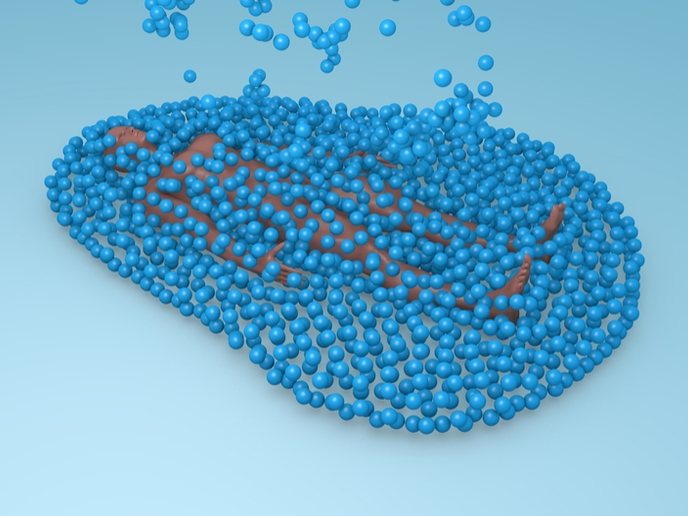How to use the collective power of mini robots to create patterns inspired by nature
Imagine a future where hundreds or thousands of tiny robots explore the scene after a natural disaster. Picture yourself being operated on by nano-sized robots that perform an internal surgery. It may sound like science fiction, but one day such technology could be available thanks to research implementing the biological principles of self-organisation in swarm robotics. Supported by the EU-funded SWARM-ORGAN project, scientists have shown how hundreds of mini robots could use genetic and cellular mechanisms governing the biological early morphogenesis. Their results were published recently in the journal ‘Science Robotics’. The article explains the concept: “Morphogenesis allows millions of cells to self-organize into intricate structures with a wide variety of functional shapes during embryonic development. This process emerges from local interactions of cells under the control of gene circuits that are identical in every cell, robust to intrinsic noise, and adaptable to changing environments.” As noted in the same article, these attributes offer “an important opportunity in swarm robotic applications ranging from construction to exploration.” It concludes: “Results show swarms of 300 robots that self-construct organic and adaptable shapes that are robust to damage. This is a step toward the emergence of functional shape formation in robot swarms following principles of self-organized morphogenetic engineering.” Human technology inspired by nature Quoted in a ‘EurekAlert!’ news release, Dr James Sharpe, head of the Barcelona unit of the European Molecular Biology Laboratory, says: “We show that it is possible to apply nature’s concepts of self-organisation to human technology like robots.” The news release explains the process: “Inspired by biology, robots store morphogens: virtual molecules that carry the patterning information. The colours signal the individual robots’ morphogen concentration: green indicates very high morphogen values, blue and purple indicate lower values, and no colour indicates virtual absence of the morphogen in the robot.” Robots transmit this information to their neighbours using infrared messaging. “This makes the robots similar to biological cells, as they too can only directly communicate with other cells physically close to them. … The swarm forms various shapes by relocating robots from areas with low morphogen concentration to areas with high morphogen concentration – called ‘turing spots’, which leads to the growth of protrusions reaching out from the swarm.” A video demonstrates the creation of various shapes in these swarms. The research team also showed the self-healing properties of these robots where they could adapt to damage. The SWARM-ORGAN (A theoretical framework for swarms of GRN-controlled agents which display adaptive tissue-like organisation) project finished in 2016. Its objective was to “extensively explore a specific approach – namely the use of GRNs (gene regulatory networks) – as a potentially powerful control method for these systems,” according to the project website. A multidisciplinary team with various backgrounds, including developmental systems biology, computer science, morphogenetic robotics and physics, participated in the project. For more information, please see: SWARM-ORGAN project website
Countries
Spain



